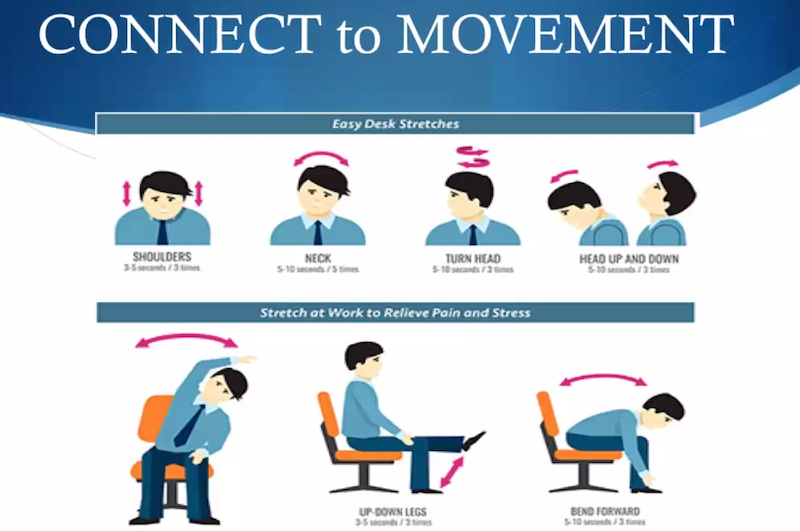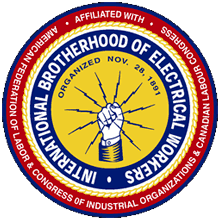New York, NY – Millions of Americans across the U.S. have been forced to work from home because of the coronavirus pandemic — and while this shift in the workplace environment will have a lasting impact on the future of many industries, it will also have a major negative effect on the physical and mental well-being of the entire remote workforce.

In a country of approximately 328 million people, at least one-third of Americans are estimated to be working remotely during the ongoing coronavirus crisis. But experts fear they have created working environments that are actually not serving them well.
GetAbstract.com, a business publication, surveyed full-time American workers and found 43-percent want to remain remote workers. A CNBC work survey found that 48-percent of workers say they are capable of working from home, and a recent IBM survey found that 54% of all employees prefer remote work.
CEO’s at Facebook, Microsoft, Google and WalMart, have already declared that they are going to maintain the work from home model until the end of the year — despite swaths of the country reopening for business. And some are even considering permanent remote work for their workers.
This shift in the work environment, however, does not take into consideration the reality that not all at home workspaces are ergonomically designed, which, according to Arlette Loeser, the director of Ergonomics, Injury Prevention and Accommodation at Mount Sinai, could result in musculoskeletal injuries,
Loeser joined with other health experts this week, for a virtual meeting on the dangers of remote work, presented by NYCOSH [New York Committee for Occupational Safety & Health].
Mickie Brown, a teacher and Clinical Manager of Education, Mindfulness and Patient Well-being at Mount Sinai, warned that the potential exists for employers to exploit remote working and force employees to work longer days, which could also impact mental well health.
“No person like me cannot come forward and not address ergonomic risk factors,” Loeser added. “These are the things that can really result in you having an injury, strain or discomfort.”
Some things to avoid at a workstation are awkward postures, static positioning (muscles not moving enough while in a shortened position), repetitive motions with keyboarding and mousing without taking breaks to exercise hands, leaning excessively in weird positions or on an armrest, which could cause nerve damage and poor organization.
The constant need to check a cellphone and tablet while working on your computer or laptop when you don’t have to is called “multiple device addiction,” which is another contributor to stress at work, according to Loeser.
“If you are not taking the time to take breaks there can be stress on your body,” said Loeser.
Symptoms of stress that shouldn’t be ignored include intermittent or constant fatigue, aches, burning, tingling or twinges in any part of your body.
“Early intervention is key because this is what we want to prevent a full-blown injury,” said Loeser. “We can do exercises, take medications or repositioning — something as basic as that is why I am here today.”
Investing in a proper work desk is better than working at a dining table, because the standard dining table could be too high for a work environment, according to Loeser. Working too close to windows during videoconferences can cause glare. Adding semi-firm pillows behind your lower and upper body is great for your back and spine.
“Your schedule may have changed and your structure definitely changed, so sometimes it takes a month to realize something isn’t working. Sometimes, we just go with it and realize that not having a structure is problematic,” said Loeser. “We also have a lack of external cues. We know when people get up to go to the bathroom, we know when they get up to go to lunch and we have those external cues to know when to get up and to not have that isolation.”
Not taking breaks can lead to hyperfocus, which might be great for productivity in the short term, but could result in eyestrain, neck strain, muscle stiffness, tightness behind the knee, carpal tunnel syndrome, headaches and bone shortness around the neck.
“What can we control?” asked Loeser. “Where is your head? Is it over your shoulders? Where is your butt? Is it back in your chair? Where are your thighs? Are they well supported? Where are your feet? Are they flat on the floor or are they on something for support? If your muscles are working hard it’s because it doesn’t have adequate support. If you are not comfortable are you doing something about that?”
Adjusting your seat to have your feet on the floor or using a cardboard box for your foot to rest on gives it support, added the director. Don’t try to create a workstation near a radiator because foot room is important for stretching your legs.
Natural light can be a mood booster, but it’s important to remember to blink often to lubricate eyes and engage in eye exercises. Using a filter on Zoom can get rid of glare from sunlight for those viewing your screen, according to Loeser. Using pillows or putting a papertowel behind your back held up by a scarf helps your posture and pushes your chest forward for better breathing.
Getting rid of an armrest leaves room for your arms to extend and for you to get out of your chair easily, according to Loeser. Resting your arm on an armrest makes it difficult to drop shoulders to keep neck muscles loose, shift your wrists and prevents tingling in the elbows unless you are suffering from neck injury.
Reposition laptops on cardboard boxes so that you are looking at the middle of the screen where your work is at, not the top of the screen where you have to bring your head up, according to Loeser.
“Follow a schedule so that you won’t have a time blurb where the day feels like it is going on and on,” said Loeser. “If you follow a schedule you will be able to follow-up on what you did. Schedule snacks and your movement breaks so you’ll know what you did, you’ll know that you moved and you’ll know that you ate.
Drink fluids so that you can move around while taking a bathroom break, according to Loeser. Make sure that as summer season approaches that windows and the air conditions are clean, especially if you have allergies. If you had an injury at work, do exercises you learned post-surgery to not get hurt once again.
There is good stress, also known as Eustress, and bad stress, according to Brown. Eustress makes us more productive, is within our coping abilities, is short term and improves performance.
“If you take a look at the stress performance curve it indicates that when our stress-level is low our performance is week, like things that have no deadline that sits in a backburner, but when your boss says that you got to get this done our stress increases and our performance increases to a certain point,” said Brown. “If there is no release or stress is unrelenting around work our performance becomes impaired around the anxiety that we feel.”
Our bodies are always trying to find homeostasis or balance, according to Brown. We are either in a mode of resting and digesting or the fight and flight mode.
“It’s only when we get stuck in one system that we lose our sense of balance,” said Brown. “How we respond to the issue is the issue. So it’s not really the issue that is the stressor, but rather how are we responding to it. This is where mindfulness comes into play.”
Mindfulness just means paying attention on purpose in the present moment without judgment, said Brown.
“As humans we love to judge,” said Brown. “My definition of mindfulness is the simple version, but it is not necessarily easy to practice.”
Research shows that being present while even doing mundane tasks helps us to feel like time is not rushing pass us, according to Brown.
“Mindfulness gives us the time to look back at our thoughts,” said Brown. “Our we planning obsessively, are we worrying obsessively, are our thoughts creating happiness or fulfillment.”
Mindfulness increases our ability to communicate, it increases our compassion for others, and it makes us feel lighter and helps with our focus since it is intentional as opposed to our thoughts just wandering.
“Our brain can change through our thought patterns,” said Brown. “It leads to improvements for markers for health. It changes our relationship to pain and can reduce inflammation from cardiac disease or rheumatoid disease.”
People can choose to meditate anywhere for a few minutes a day by choosing to focus on their breathing, focusing on sound, choosing to look at something with a soft gaze, according to Brown.
“When we go to the gym our body becomes strong and its we have full control over the functionality of our body because the muscles are strong. We have the same thing with our mind,” said Brown. “We have control over where we focus our attention, rather than the loudest thing in the room getting our attention.”
People can also choose to be mindful of what they put in their body and how their bodies react to it, according to Brown and Loeser. Eating protein introduces sustained energy to your body; carbohydrates will give you short spurts of energy. Sugary snacks and excessive caffeine usage will cause you to crash. Also, slow down when not just when you chew or eat, but when you put things in your body. Stop to read the label.
“Pay attention to the things that are critical to your health,” said Brown.



